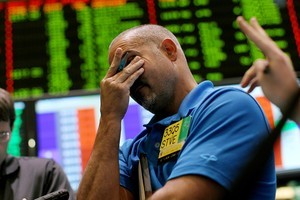
Materials prices to collapse further
If you think the declines so far in iron ore are significant, you ain’t seen nothing yet.
I think the declines we have seen in commodity prices still have a long way to go.
We’ve long argued that a classic supply response would follow the massive investment in exploration and production that itself followed a surge in demand from China that caused prices to reach historic highs.
But China’s demand – itself was based on unsustainable growth in fixed investment spending – is now fading. China represents less than 11% of the global economy, but it commanded 30% to 40% of total global demand for copper and 60% of total global demand for cement and iron ore thanks to the massive social modification projects that required bridges, roads, ports, cities, subways and skyscrapers.
This is not sustainable and so demand for the raw ingredients will decline. Additionally, the nature of future growth will change and more consumer driven growth will again demand less materials.
That takes care of demand but the supply response takes time to ramp up because of the years of investment and operational development required. Despite falling Chinese demand there are years of increased supply to still emerge.
FMG’s Nev Power reckons while iron ore prices have slumped to $US104 a tonne in recent days, “as soon as restocking and production returns to normal we expect to see prices back in the $US120 to $US150 per tonne range”.
I reckon; never ask a barber whether you need a haircut!
Here are some important points to consider;
– Previous phase of China demand due to imbalanced growth The next phase of China’s growth will be less commodity-intensive.
– The last phase of commodity purchasing by China appears to have added to inventory.
– Chinese growth, even if it does bounce, will be drawing down on these inventories.
– Lagged supply to increase despite the declining demand. For example, supply of copper to 2019 will be roughly equal to the increase in supply over the decade to 2011.
– Iron ore supply response even more dramatic – capacity tripled to 2,600 million tons in decade to 2020. Will lead to lower prices for the long term.
– Stockpiling in China to ensure bounce in economy doesn’t lead to permanent rise in commodity prices.
– Chief Executive Officer Yusuf Alireza of Noble Group Ltd. (NOBL), Asia’s biggest listed commodity supplier, says tough environment for the next 12 to 24 months.
– Vale SA – the world’s largest iron-ore producer – says China’s golden years are gone.
– Paper billionaires to see their day in the sun pass
Wow, Vale said that !! He, she (or they) are very keen. The last bhpb ion ore boss, Ian Ashby said that on march 20th of this year. 10 days later he was sacked ( whoops, I mean he resigned) . Worked for bhpbio for 25 years, You don’t go talking down your biggest customer .
P.S. Great blog, I thoroughly enjoy reading it. May you and your team keep up the fantastic work!
Dear Roger,
Have been following your posts (as well as general news about problems in China) with great interest over the last few months. Since the root cause of the iron ore boom appears to be the real estate and fixed asset construction areas, I was wondering – do you have an opinion on whether the Chinese banks will be manipulated again to fund continued growth via these means? Especially since their balance sheets have blown out with ever-extending loan receivables.
Thanks!
no country can afford to fund endless profligacy.
Roger, agree with your points about supply side of equation increasing while demand side reducing putting pressure on prices of iron ore.
But, what does your research say about economically viable cost of production of iron ore for companies around the world? How many companies can keep producing iron ore at $70 / tonne?
In your book valuable you mention when there is a downturn in any industry it is usually the strongest companies within that industry which comes out even more stronger as they consume their competitors during that process. A recent example in Australia is the financial industry during the GFC. CBA would be considered having the strongest balancesheet of the big 4. Post GFC it has come out stronger consuming Bankwest and Count financial.
I would hazard to say in mining industry BHP has the strongest balancesheet. Only time will tell once this downturn is over whether it comes out stronger than before.
I think for BHP iron will continue to be profitable, but it has already started looking at options. It is investing heavily in increasing it petroleum output, it has request extension for Olympic dam expansion till 2016. Heck, even Natural gas prices are at $3.40 from a low of $2.
All of the above is true. In answer to the first question, simply have a look at the years when iron ore trade below $15/t (there are many decades) and then take a look at the annual reports of the major players during those years.